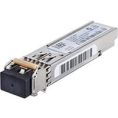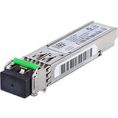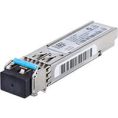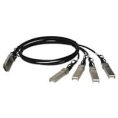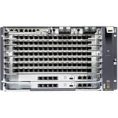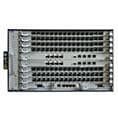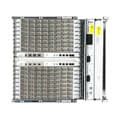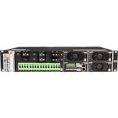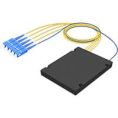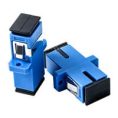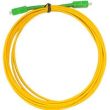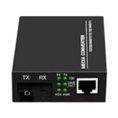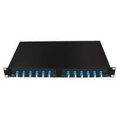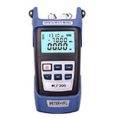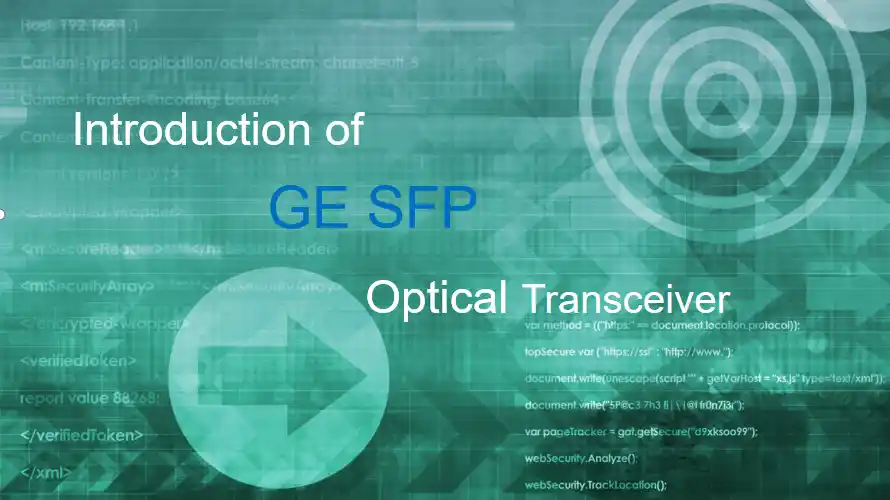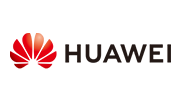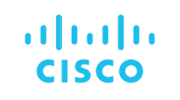SFP Optical Modules (Small Form-factor Pluggable) are compact, hot-swappable transceivers used for telecommunication and data communication applications. They connect network devices (like switches, routers, and servers) to fiber optic or copper cables, enabling high-speed data transmission over short or long distances, while GE SFP Optical Modules (Gigabit Ethernet Small Form-factor Pluggable) are a type of fiber optic transceiver designed specifically for 1 Gigabit per second (1Gbps/1000Mbps) Ethernet networks.
Types of GE SFP Modules
| Type | Media | Wavelength | Max Distance | Application |
| 1000BASE-SX | Multi-mode fiber (MMF) | 850nm | 550m | Short-range (LAN/Data Center) |
| 1000BASE-LX | Single-mode fiber (SMF) | 1310nm | 10km | Long-range (Metro Networks) |
| 1000BASE-LH | Single-mode fiber (SMF) | 1310nm | 40km | Extended long-haul |
| 1000BASE-ZX | Single-mode fiber (SMF) | 1550nm | 80km | Ultra-long-haul |
| 1000BASE-T | Copper (RJ45) | N/A | 100m | Ethernet over Cat5e/Cat6 |
| 1000BASE-BX | Single-strand fiber | 1310nm/1490nm | 20km | Bidirectional (1 fiber line) |
Advantages of GE SFP Modules
Flexibility: Can choose fiber (SX/LX) or copper (T) based on distance needs.
Cost-Effective: Affordable for Gigabit networks compared to 10G/25G SFPs.
Backward Compatibility: Works with older 100Mbps devices (auto-negotiation).
Easy Upgrades: Hot-swappable for quick replacements.
Key Features to Consider When Choosing a 1G Optical Transceiver
1. High Data Transmission Rates
-
Speed: Supports 1.25Gbps (actual throughput ~1Gbps after encoding overhead).
-
Sufficient for: Enterprise LANs, surveillance systems, and small-to-medium data centers.
-
Comparison:
-
1G SFP vs. 10G SFP+: 1G is cost-effective for non-bandwidth-intensive applications.
-
2. Excellent Signal Quality
-
Low BER (Bit Error Rate): Ensures reliable data transmission.
-
Features enhancing quality:
-
DOM (Digital Optical Monitoring): Real-time monitoring of Tx/Rx power.
-
APD (Avalanche Photodiode) Receivers: Used in long-haul SFPs (e.g., 1000BASE-ZX) for better sensitivity.
-
3. Easy Installation & Hot-Swappability
-
Plug-and-play: No reboot required (hot-swappable).
-
Tool-free insertion/removal: Standard SFP design.
-
Auto-negotiation: Works with existing 100Mbps/1Gbps ports.
4. Cost-Effectiveness
-
Price range: Typically 10–50 (vs. 50–200 for 10G/25G modules).
-
Best for: Budget-friendly upgrades without sacrificing performance.
5. Multiple Form Factors
| Form Factor | Use Case | Status |
|---|---|---|
| SFP (Most common) | Modern switches/routers | Widely used |
| GBIC | Older equipment (obsolete) | Rarely used today |
| SFF (Small Form Factor) | Fixed-form switches | Less common |
| 1×9 (Pigtail) | Legacy systems | Mostly phased out |
6. Additional Considerations
-
Temperature Range:
-
Commercial (0°C to 70°C) vs. Industrial (-40°C to 85°C).
-
-
Compatibility:
-
Vendor-locked (Cisco, HPE, etc.) vs. Generic (MSA-compliant).
-
-
Fiber Type:
-
Multi-mode (MMF, OM1/OM2/OM3) for short distances.
-
Single-mode (SMF, OS2) for long distances.
-
In conclusion, for most small-to-medium enterprises or legacy systems, 1G SFPs remain the optimal choice. However, for high-growth environments, evaluate if 10G SFP+ is a better long-term fit, we will introduce the 10G SFP+ modules in the next post.

